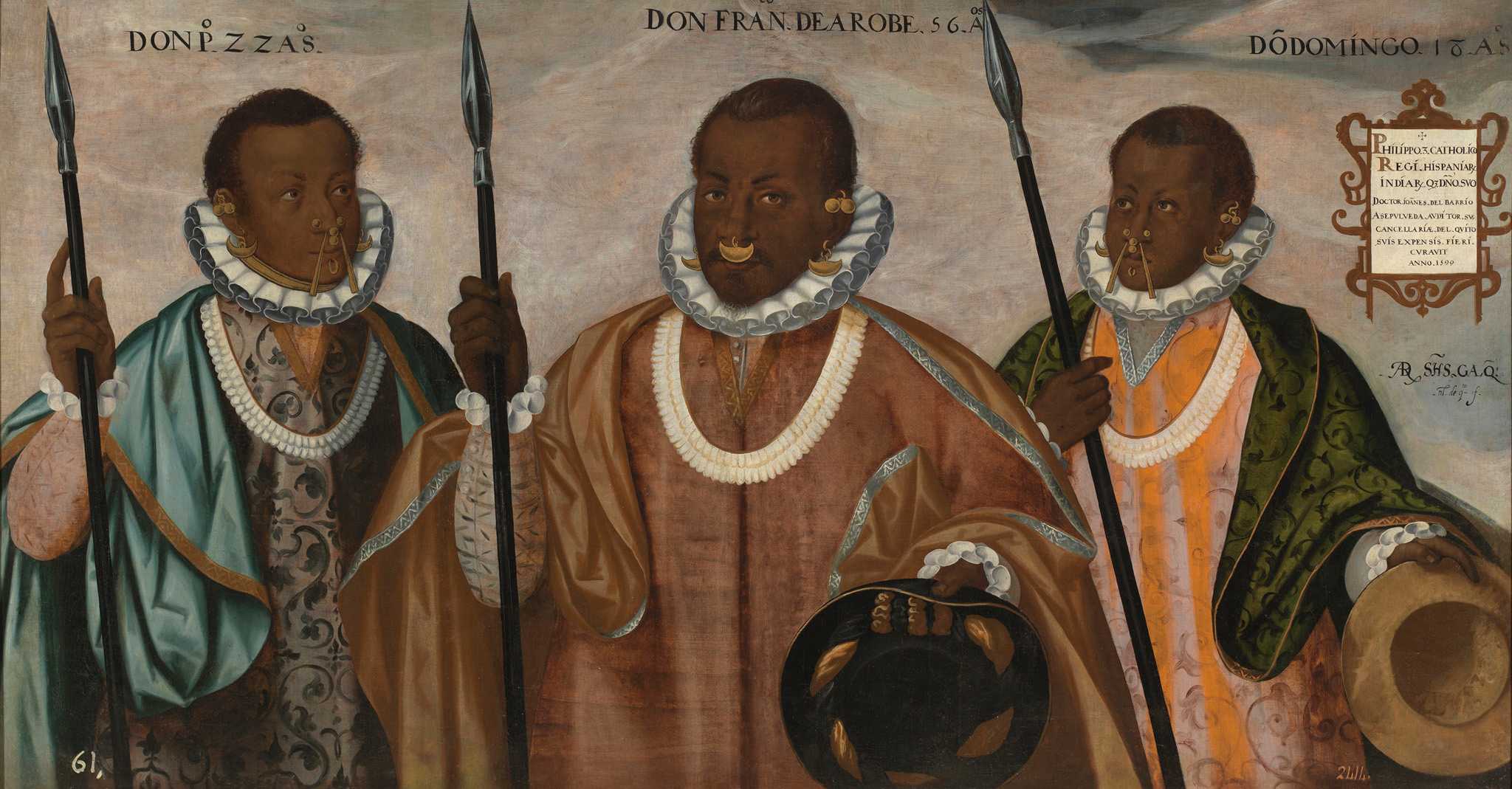Chapter 1
Slavery & the Emerging Global Economy
In the 15th century, people did not see themselves as Africans or Europeans. They saw themselves aligned with certain cultural groups and regions. People in the western African region were leaders and everyday men and women with intellect, culture, power and a sense of community. While people in the western European region sought new opportunities to expand their global power as they recovered from challenges including religious warfare, pandemic conditions and famine. They engaged in global trade, diplomacy, and cultural exchange. In the 1440s western Europe and western Africa were no longer limited by overland trade, and they connected along the Atlantic coast which opened new trade relations.
Eventually, the Western Atlantic became a site for colonization with fertile land to cultivate sugar, the driver of the transatlantic slave trade. The demand for profit and power came with a human cost. At the heart of the tension were the lives of enslaved African men, women and children and the moral degradation of enslavers and those who benefited from trade, both directly and indirectly.
Queen Nzingha
Queen Nzingha
By 1626 the ruler of the Mbundu people, Queen Nzingha was a formidable leader in the state of Ndongo located in Kongo. For 40 years she fought to protect her subjects and homeland. Nzingha provided asylum to other African people and led warriors into battle. She converted to Catholicism and formed strategic trade alliances to fight off the Portuguese as they tried to seize political control and economic power in central Africa. Ultimately, Queen Nzingha and her people faced a cruel choice—enslave others, or become enslaved themselves. She is still revered today for her strength and courage.
I admit I am sickened at the purchase of slaves . . . but I must be mumm, for how could we do without sugar or rum?
William Cowper, from his abolitionist poem "Pity for Poor Africans", 1788
The Atlantic Creoles
Atlantic Creoles were people of African descent who moved easily between cultures and across landscapes. Often born in port cities, they were multilingual and familiar with international trade. They served as liaisons, interpreters, diplomats, and missionaries. As cultural mediators, they effectively navigated all sides of the Atlantic world and helped it come into being. This fluidity demonstrates that status was not yet firmly tied to ideas of race during this early period.
Dom Miguel de Castro, the Diplomat
Dom Miguel de Castro
Dom Miguel de Castro was part of a diplomatic mission sent by Queen Nzingha from Kongo to the Netherlands in the 1640s. He was sent to resolve political and trade conflicts between African and European powers. These missions are evidence of the role that African rulers played in the extensive Atlantic trade networks.
Don Francisco de Arobe, the Community Leader
Don Francisco de Arobe was the son of an escaped slave and a Nicaraguan woman. He rose to prominence in Spanish-controlled Ecuador. This painting depicts de Arobe and his sons in part European, part indigenous dress. De Arobe was the leader of Esmeralda, an Ecuadorian community founded by self-emancipated enslaved people.
Don Francisco de Arobe
Juan Garrido, the Conquistador
Conquistador Juan Garrido standing next to Hernando Cortés, 1533
Juan Garrido was a Spanish conquistador of African descent who traveled to the Caribbean and the Americas during the 1500s. He participated in some of the most significant events in the Spanish conquest of the region, serving alongside Hernando Cortés and Juan Ponce de León.
Esteban de Dorantes, the Explorer
Esteban de Dorantes
Esteban de Dorantes was an enslaved man and explorer. He is believed to be the first African man to travel furthest west in what is today the United States. He survived many perils before becoming a guide for Spanish expeditions into the Southwest. A skilled linguist and intermediary, de Dorantes moved easily between European and Native American cultures.
Rebecca Protten, the Missionary
Rebecca and Christian Protten and Child, ca. 1751
Rebecca Protten embodied the spread of Christianity across three continents. Born enslaved in the Caribbean, she was freed and became a Moravian missionary, traveling to the island of St. Thomas to convert enslaved people. She eventually moved to Germany, then to Christiansborg in Ghana, where she and her husband ran a school for mixed-race children.
| The World in 1400 | The World After 1400 | |
|---|---|---|
Slavery was everywhere. | Europeans refused to enslave fellow Christian Europeans. | |
The trade in gold, salt, and spices far exceeded the trade in slaves. | Enslaved people were dehumanized. Considered property, they could be used up and replaced. | |
Slavery was not based on perceptions of race. | Slavery became racialized. | |
Slavery was a temporary status. | Slavery was for life – a legacy passed down through the generations. |
